A far away snowshoeing adventure is always exciting. It also takes planning, time and money when a trip involves distance and an overnight stay. But if you live where there is snow, finding a snowshoeing location close to home can provide an exciting adventure as well. It may not be as grandeur, but it can be as enjoyable.
The benefits to snowshoeing close to home are several. Consider a plan that takes in a day at a nearby park… say within about 20 miles from home. This trip can be planned on the spur of the moment. It would not take much time to get there, perhaps about a half hour. The cost in gas would be minimal, and you could save money by packing a lunch rather than dining out. Additionally, any money you would spend on the outing keeps the dollars in your community.
So, why not spend a little time identifying some locations in your neighborhood or nearby. City, county or state parks and state forests, for example, often have snowshoe trails or permit snowshoeing on their properties. Nature centers, wildlife preserves and golf courses are other options to consider. And some public schools and colleges have land areas that may permit snowshoeing.
If you assess your area, I am sure you will come up with a few locations to snowshoe. Check out their policies, inquire if there are any fees, put your snowshoes in the car and head out only a short distance on a Saturday or Sunday for a day of snowshoeing.
Out my Backdoor on the Big Eau Pleine Flowage
Eleven years ago, my wife and I bought a small home located on a waterfront acre on the Big Eau Pleine Flowage located 22 miles northwest of where we work in Stevens Point, Wis. This was a dream come true for my snowshoeing addiction.
I put on my snowshoes, head out my back door, and snowshoe onto or along this large reservoir with miles of shoreline to explore. Every winter I enjoy a half-mile hike from our house along the flowage to a nearby wooded area where I lay under a hemlock grove for a short visit. I look up at branches laden with fresh fallen snow and backed by blue sky. It is truly a winter paradise for me.
The Big Eau Pleine Flowage is a 6,348-acre body of water with seventy-two miles of shoreline. The reservoir comes off the Big Eau Pleine River and was developed in 1937 for water flow and flood control.
The population on the flowage is low with very few homes visible from the water, thus giving the appearance of being in the backcountry. But just beyond a good part of the tree line surrounding the flowage is Wisconsin farmland.
Recreational fishing on the flowage has been popular in winter as well as summer, with ample walleye, northern pike and bass…. and a few good size musky. With deep snow on the flowage one season, two friends and I hiked out on snowshoes pulling a pop-up ice fishing shanty. We headed out directly in front of my house about a quarter-mile to an area where the channel flows. The fish were not biting that day. But we did enjoy soup warmed over a gas stove and a couple shots of brandy to warm our spirits.
Big Eau Pleine County Park
About 10 miles from our house heading west is the Big Eau Pleine County Park, the largest park in Marathon County. This 1,450-acres park made up of a mixed hardwood forest, sits on a two-mile peninsula that protrudes into the Big Eau Pleine Flowage. There are 12 miles of developed trails for hiking, snowshoeing and cross-country skiing. When snowshoeing on the shared trail, I stay to the right or left of the ski tracks.
One late afternoon a few seasons ago, I started out from the main trailhead and snowshoed northeast and then eventually south. At a point on the trail, I noticed there was not much daylight remaining to finish hiking the entire circle. So, I decided to go off-trail and head west. After breaking trail for what seemed quite a ways, I became mindful about the onset of dark. I was not worried about snowshoeing at night, but I was concerned that my wife Liz would be worried. I knew that if I kept heading westward, eventually I would come to the park road that runs down the center of the peninsula. Most likely I would end up south of the trailhead and I could then hike up the road to my car.
I saw a ridge in the distance. Surely something has to be over that ridge. As I began to crest the hill, I spotted the top of an outhouse. “Great! I must be south of the trailhead on the park road somewhere. But how far south I’m not sure,” I thought. Taking a dozen more steps, I saw the roof of my car. How I ever came out exactly where I put in, I do not know. Perhaps it was divine intervention for all I know. When I got home, Liz did not even notice I was late.
For a short adventure, one can also snowshoe on the single-track Giant Hardwood Nature Trail located near the park’s south unit campground. I enjoyed reading about the park’s vegetation and habitat on their interpretive signs when hiking on this loop. Since the Big Eau Pleine County Park is not heavily traveled by snowshoers, it is definitely a hidden Wisconsin snowshoeing treasure.
George W. Mead Wildlife Area
Snuggled up to the Big Eau Pleine Flowage is a two-mile stretch that leads into the 33,000-acre George W. Mead Wildlife Area. This woodland, grassland and wetland wildlife preserve with over 70 miles of trails, offers more space than I could snowshoe on in a lifetime.
An ideal area to snowshoe is on the trails at the Stanton W. Mead Wildlife Education and Visitor Center, located only six miles from my home. From the Center there is a 7-mile circular trail that passes through a wooded area, by open meadows, past dike areas, and meanders along the Little Eau Pleine River. There are also shorter trails that head out from the Center.
The Mead is a great habitat for a variety of wildlife. The area is known for its magnificent bird nesting and waterfowl migration in the fall. Canada geese, great blue herons, cormorants and trumpeter swans migrate along with a myriad of other bird species. In the winter, the Mead is silenced with a blanket of snow.
Sixty trailheads or entry points are located just off roadways where one can access the areas on foot. All of these entry points and trails are open to snowshoers during winter. Since trails lead through forests, frozen wetlands, and along dykes, I suggest someone snowshoeing in the area carry a compass to be sure they can navigate their way back out. Keep in mind that this is a very large area.
Go Out Your Back Door
Putting on my snowshoes and heading out my backdoor offers me a fun adventure every time. If there is snow outside your backdoor and you have access to public sidewalks, land or trails, you can snowshoe in your very own neighborhood.
One early October several years ago, we had about eight inches of snow. I put on my wood-framed, green mountain modified bearpaws and snowshoed down my street and back. It felt great to be able to snowshoe on fresh snow so early in the season without having to make any plans and without leaving my neighborhood. I hope you too can take advantage of the snow close to your home this season.

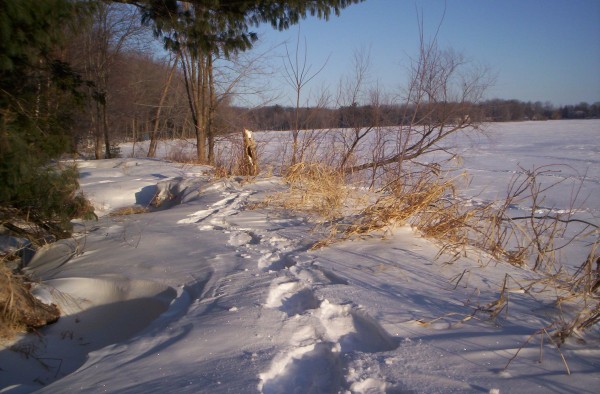
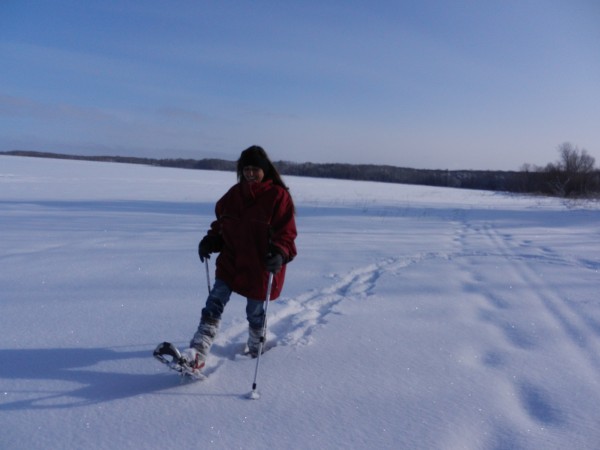
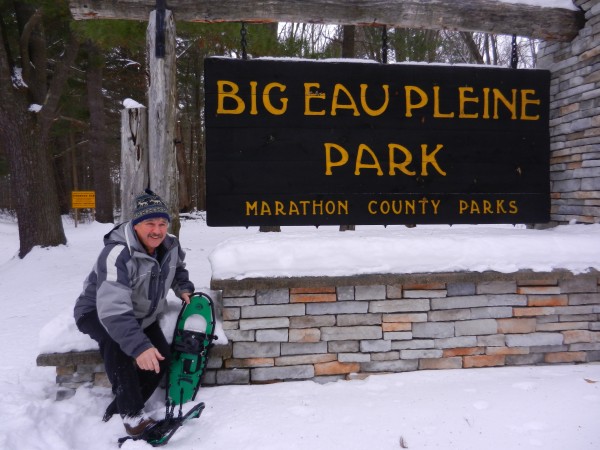
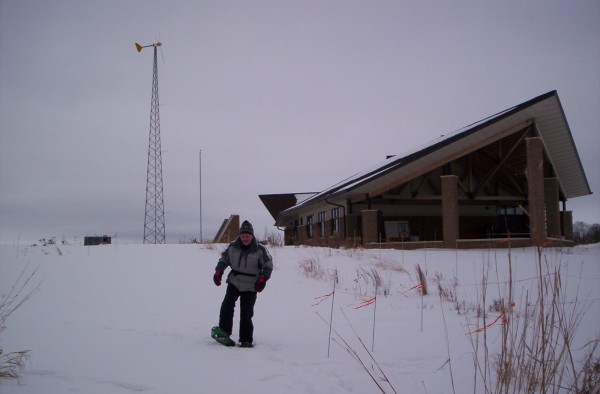
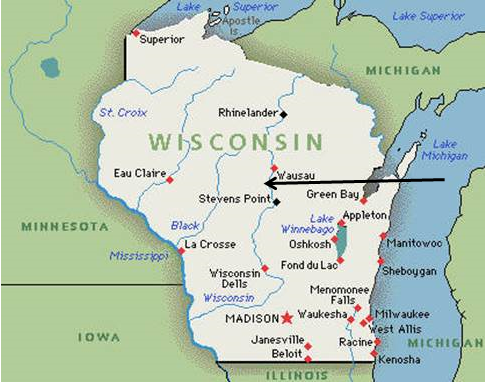






Leave a Comment